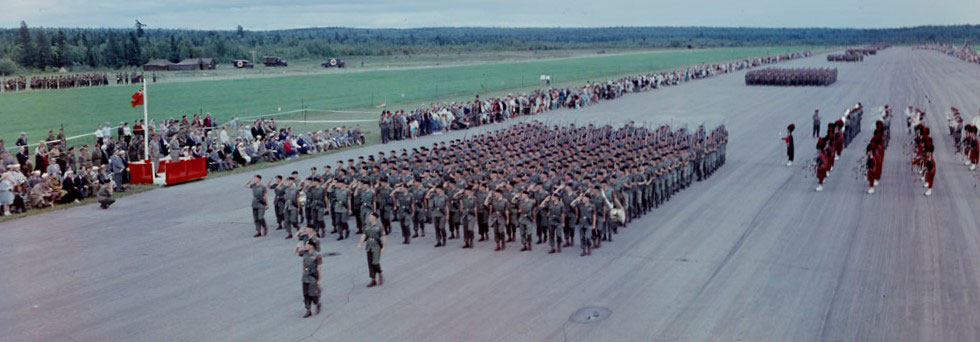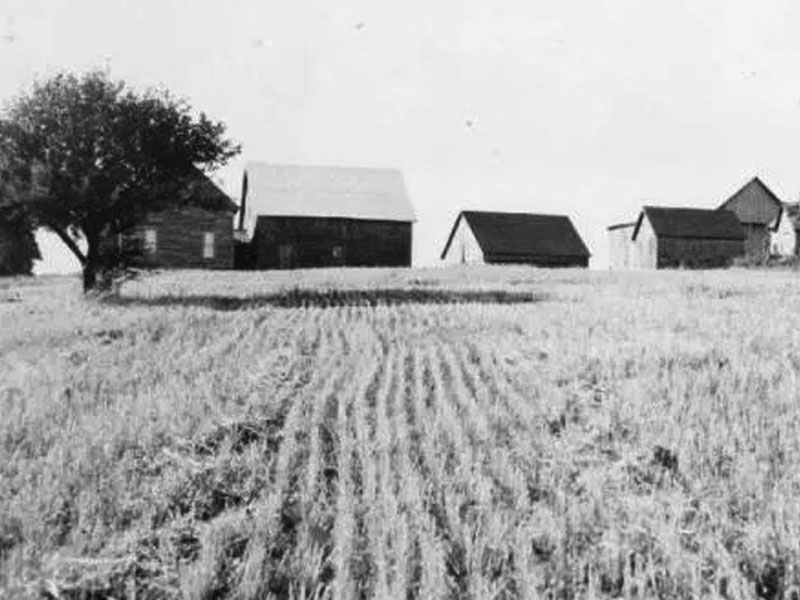Heavily motivated by a dire need to obtain economic stimulus to central New Brunswick, Canadian defence planners recognized an ultimate need to provide the Canadian Army with a suitable training location large enough to train an entire division. Thus, the Canadian Forces Base Gagetown (CFB Gagetown) was born.
Initially outlined as being a prosperous farming and lumbering community up until the end of the Second World War and the beginning of the Cold War, Gagetown would soon experience what is defined as the largest single land expropriation in New Brunswick history.
Construction began in the early 1950s, with the facility benefiting from convenient railway connections provided by Canadian National and Canadian Pacific Railways. Prior to such construction, the base was heavily surveyed in an attempt to not affect some of the historic communities alongside the western bank of the Saint John River, such as Arcadia, Hampstead, and Browns Flat; with communities such as Petersville, Hibernia, New Jerusalem, North Clones, and several others being absorbed in the process.
The land was defined as a perfect, easily changeable blank canvas, providing officials with lush Acadian forests, swamp and marshland environments, and open farming areas.
Today, Base Gagetown, now more commonly known as 5th Canadian Division Support Base – Gagetown (5 CDSG), stands as New Brunswick’s second-largest public-sector employer and provides full-time employment to approximately 6500 military members, including the Reserve Force and 1000 civilians (2021), with the total number of personnel increasing dramatically with every passing year.



